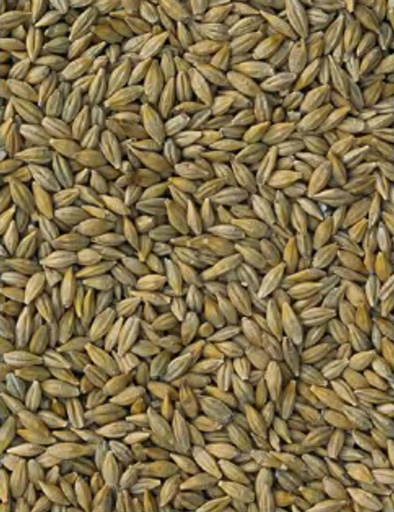1.4 Barley and malt
Malting is an important component of the brewing process. Malted barley is the source of the sugars (principally maltose) which are fermented into beer by the yeast. In fact, malt is simply a general term used as an abbreviation for several things associated with maltose and malted barley.
Malting is the process in which barley grain (Figure 6) is soaked and drained to initiate the germination of the plant from the seed. When the seed germinates, it activates enzymes which start converting its starch and protein reserves into sugars and amino acids that the growing plant can use. The purpose of malting a grain is to release these enzymes for use by the brewer. Once the seeds start to sprout, the grain is dried in a kiln (in a process known as kilning) to stop the enzymes until the brewer is ready to use the grain.
The brewer needs to take into account both the water chemistry and the amount of enzymes in each type of malt to optimise their beer recipes.
Specific enzymes activated in this process are primarily two types of enzyme known as amylases: α-amylase and β-amylase. These enzymes are present naturally in your saliva and break down starch ingested into simple sugars which can be digested by the body. For brewing purposes these two enzymes differ in function with respect to the sugars produced from the starch. β-amylase produces fermentable sugars (such as maltose), which are later turned into alcohol and carbon dioxide during fermentation. Conversely, α-amylase produces unfermentable sugars (such as maltodextrins), which stay in the brew, adding body and fullness and bringing a sweet, malty flavour to the beer.
β-amylase is activated at around 62–67 °C, and α-amylase around 71–72°C. By carefully controlling the temperature of the brew, the brewer can determine the ratio between the two types of sugar, and thus the final amount of alcohol and malty flavours left in the beer.
As you have now seen, the whole brewing process is more complex than you might have first thought, with precise control needed over each of the four constituents of the final beer. You are now going to see how all of this works in practice by exploring a brewery.

